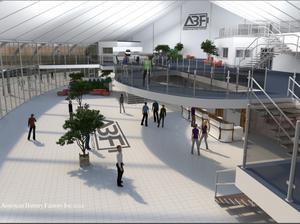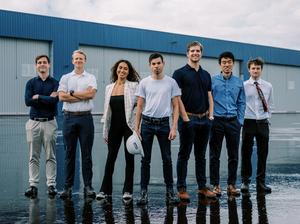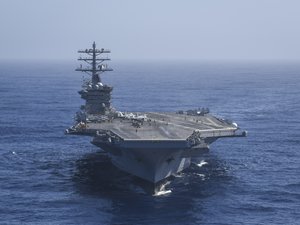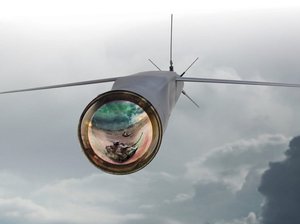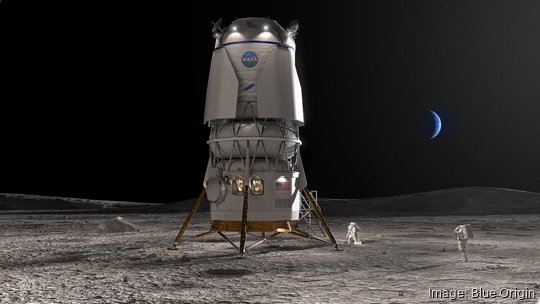
Blue Origin, which recently opened its Phoenix metro office, and Lockheed Martin Space have joined forces to win a $3.4 billion contract to build a second, reusable lunar landing system for NASA that will ferry astronauts between a waiting spacecraft and the surface of the moon.
The space agency’s selection ends a two-year lobbying effort by the National Team, led by Jeff Bezos’ Kent, Washington-based Blue Origin, to have its lander included in NASA’s Artemis moon missions.
NASA had previously selected Elon Musk's SpaceX to build a lander slated to land the first Artemis astronauts — and the first woman — on the lunar surface as soon as 2025.
The space agency awarded a second lander system contract to encourage the participation of other aerospace industry partners and spur more innovations to help establish a lasting presence on and around the moon, said Bill Nelson, NASA administrator, announcing the contract award Friday.
“This is about maintaining our excellence as the world’s top space program and maintaining that excellence for decades to come,” Nelson said.
The lander will fly astronauts from a NASA-funded outpost in lunar orbit, known as the Gateway, down to the moon’s surface and then back.
Blue Origin Phoenix office in full hiring mode
Blue Origin’s system, dubbed the Blue Moon lander, is being designed to carry four astronauts and 20 tons of cargo to the surface for missions. Developing the lander for the first missions will cost close to $7 billion, possibly more, based on the public-private model NASA is pursuing.
Industry partners will invest at least as much of their own money as NASA will pay toward the lander, said John Couluris, head of Blue Origin’s lunar lander program, who estimated Blue Origin will contribute more than $3.4 billion.
Blue Origin opened its new Phoenix facility in April. The company is occupying 43,200 square feet at 2325 E. Camelback Road. The Arizona office will contribute to avionics, systems engineering and supply chain management across Blue Origin’s programs, according to the company.
About 100 people have been hired for the Phoenix office. Blue Origin expects to hire hundreds more to fill positions in engineering, mission design and software for launch vehicle and space system programs.
Blue Origin and Lockheed Martin Space have worked together on designs of lunar lander systems since 2019. The National Team winning the lander award Friday includes Boeing Co., building the docking systems; Draper Labs, designing navigation and avionics; Pittsburgh-based Astrobotic building cargo storing and Honeybee Robotics designing cargo offloading systems. Jefferson County-based Lockheed Martin Space is building a spacecraft that’s separate from the actual landing craft. It’s a vehicle known as the Cislunar Transporter, that will fuel and refuel the Blue Moon lander in space, the company said.
“Lockheed Martin is excited to be part of the National team and we are looking forward to building humanity’s first Cislunar Transporter,” said Kirk Shireman, vice president of lunar exploration campaigns at Lockheed Martin Space. “We value Blue Origin’s thoughtful approach to developing human-rated flight systems and are thrilled to be part of a diverse team that combines innovation, deep experience and a strong industrial base.”
The National Team’s 52-foot-tall Blue Moon is scheduled to land astronauts on the fifth Artemis program mission in 2029. Lockheed Martin Space is already the prime contractor building the Orion capsules, deep-space spaceships that NASA will use on all of its missions flying astronauts from Earth to lunar orbit.
The Orion capsules have twice flown successful test missions without crew, most recently completing a month-long Artemis 1 test flight around the moon last fall.
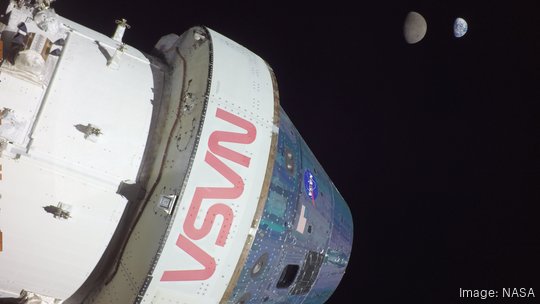
Orion isn’t designed to take astronauts to the moon’s surface.
For that NASA needs a lander that would ferry astronauts to a lunar-orbiting way station, called the Gateway, which NASA has contracted companies to develop separately.
Companies teamed up to propose landers under earlier bidding. NASA made the surprise decision in April 2021, to award a single, $2.9 billion lunar lander contract to SpaceX.
Elon Musk’s company proposed using the Starship spacecraft it’s developing to serve as the landing craft that astronauts board at the Gateway.
Bezos pushed for second lander contract
NASA had said it would award two lander contracts from among three bidders then, and later pick which of the two lander finalists to use on the Artemis III mission that will return U.S. astronauts to the moon’s surface.
Instead, citing limited funding from Congress, NASA selected only SpaceX’s lowest-price proposal over the other bidders. The National Team’s proposal was said to cost NASA several times more than what SpaceX proposed.
Bezos’ company tried unsuccessfully to reverse the space agency’s decision. NASA, after securing more lander funding from Congress, opened bidding for a second lander in September.
“We want more competition,” Nelson, a former senator who flew aboard NASA’s Space Shuttle, said Friday. “We want two landers. That’s better — it means you have reliability, and you have backups.”
Blue Origin plans to test parts of the Blue Moon lander’s systems in launches in coming years that will use the company’s massive New Glenn rocket, which is under development now.
A series of test missions, some of which will be to the moon, will culminate in 2028 with a test version of the final Blue Moon lander flying to lunar orbit without crew on board, landing on the moon’s surface and returning to lunar orbit, Couluris said.
An identical Blue Moon lander will be built for the following year’s Artemis mission with astronauts.
The Blue Moon landers are being designed to remain in lunar orbit for years and, with refueling, be able to dock with Gateway and fly astronauts or cargo to multiple sites on the lunar surface, he said.

